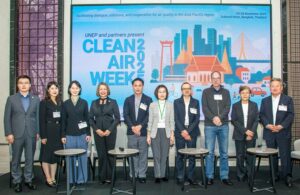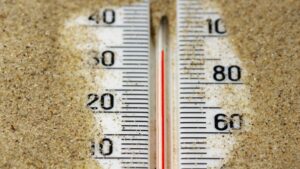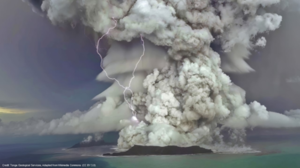How to improve the resilience of cities?
Cities are complex and heterogeneous environments that are made up of a variety of neighbourhoods that generate particular climates. To get a grasp on what influences the urban atmosphere and to quantify the implications for the health risk of city dwellers, researchers measure and model many different chemical and physical processes.
“In Europe, more than 70% of the population lives in urban areas. Cities can pose several health risks with air pollution being a major concern. For example, in Paris, more than 75% of the inhabitants of the Paris region are regularly exposed to higher pollution levels than recommended by health organisations,” says Simone Kotthaus, researcher at the Institut Pierre-Simon Laplace. Her research is particularly concerned with urban climate conditions and their effect on air quality, two major public health issues. “My work focuses on the lower layers of the atmosphere, that define the air we breathe. Here climatic conditions have very direct effects on humans” she adds.
In this environment, thermal, physical and chemical exchanges between the surface and the atmosphere are largely determined by human activities and structures. In the countryside, moisture evaporating from the soil and the transpiration of trees helps to cool the atmosphere. In the city, where buildings and streets dominate, there is less cooling from evaporation and the impermeable building materials absorb a lot of the solar radiation. Heat produced by the daily activities of urban residents, such as traffic, heating and air conditioning, further increases the temperatures in this already warmer environment. As a result, “many climate change effects are amplified in urban areas”, states Simone Kotthaus. “In cities, heatwaves can be more frequent, more intense and they can last longer, which makes them more deadly than in the countryside”. Although these densely populated areas created by humans for humans, the chemistry and dynamics of the atmosphere still lack understanding in their complexity. “It may seem surprising, but the urban atmosphere is one of the least observed parts of the atmosphere,” says the researcher.
A complex system
The specific settings of cities further increase risks associated with climate change and urban areas are often subject to high pollution levels. Yet, there are concrete ways to adapt to future climates and mitigate their adverse impacts to maintain or ideally improve standards of living. Be it by planting vegetation for the development of cool areas or by facilitating ventilation through the orientation of streets, urban planning is an essential tool to build resilient and pleasant cities. Even though the impact of each urban planning decision is hard to tell accurately, main principles emerge and raise new questions to researchers. “Interventions that cool down the air near the surface may in turn affect the vertical mixing of heat and pollutants. We need to carefully assess these complex interactions to ensure reduced heat risk does not unintentionally result in higher levels of air pollution”, she illustrates.
“As these processes are very interdependent, we need to continue studying the urban atmosphere to be able to give informed recommendations to urban decision makers.” Numerous observations and models provide new insights on the complexity of the urban system. “We have seen great advances in new tools over recent years, both in term of measurements and numerical simulations. They allow us to gather an increasingly detailed representation of the real urban system” concludes Simone Kotthaus.
Translated from Marion Barné for IPSL
To go further
Discover the PANAME2022 campaings to study the urban climate
Take a look at Mozaïka, the Rio Summit to see other articles and podcast of this series






